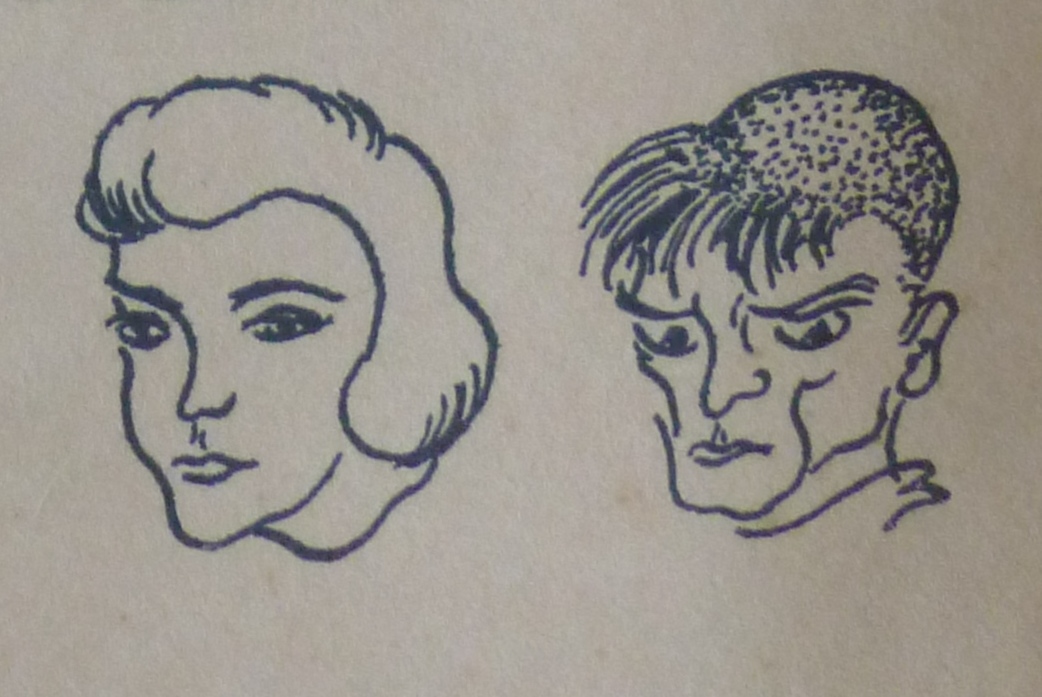
July 21, 2014, by Kathryn Steenson
The Black Sheep
Whilst helping a visitor with an enquiry recently, I came across a slim pamphlet entitled “Young Delinquents in Nottingham” (Ref: Not 3. H40 NOT). The eye-catching cover features a series of caricatures of juvenile delinquents in a style more often associated with cartoons or parody. If criminals were as distinctive looking as some of these drawings, the police would probably have a much easier job of catching them!
Actually, this is the published ‘Report of the Juvenile Delinquency Panel’ established by the City of Nottingham Education Committee in 1948 and covering the years 1946 – 1951. The panel included representatives from social, probation, education and health services, as well as local trade organisations. The purpose was to compile statistics about children aged 8-16 caught and convicted for indictable offences, and the types of crime they committed, between 1946 and 1951.
Figures for specific crimes are given for 1951 and then, as today, young people are more likely to commit crimes involving minor criminal damage and petty theft than any other types of crime. The illustrations remind me of the sorts of criminal activity or pranks depicted in children’s adventure books; either villainous gangs of thieves or naughty children scrumping apples. Presumably one of the images represents youths loitering in an intimidating fashion, as I don’t think it has ever been illegal to lean against a lamppost!
Youth crime is a perennial worry for society. Most years there is a peak in media coverage as the schools break up for the summer holidays, and concerns are inevitably raised about bored children engaging in anti-social behaviour. This report, however, found that on average, there was little difference in the number of crimes committed in or outside term-time, or in the number of crimes committed in summer or winter.
The information presented is a serious attempt to inform the public about the realities of youth crime in Nottingham, which makes the illustrations a little jarring. If the intention was to make the report accessible and attract interest in what is essentially a statistical summary, then it has certainly worked. Perhaps it was also because the Panel were trying not to demonise young people or scare local residents. As is helpfully illustrated by this image of a flock of sheep, the Panel were keen to stress that for every young offender, there are 99 young people who do not get into trouble:
The pamphlet doesn’t make any attempt to thoroughly examine the causes of juvenile delinquency, but does identify two recurring factors that are still at the centre of the political debates today: many of the children involved underachieved at school, or were from ‘problem’ families. The problems affecting these families have not changed in the intervening two generations – abuse and/or neglect, substance abuse, and poverty.
The pamphlet is in the East Midlands Collection, one of over 30,000 open-access books, pamphlets, maps, and journals relating to the historic counties of Derbyshire, Leicestershire, Lincolnshire, Nottinghamshire and Rutland. Although the Collection is commonly associated with local history, many subjects are represented, including the natural sciences, architecture and buildings, archaeology, literature, economics and social issues. They are all available in our Reading Room on Kings Meadow Campus.

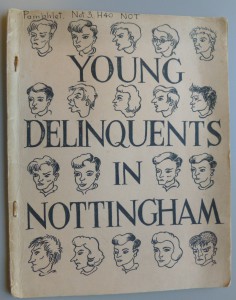
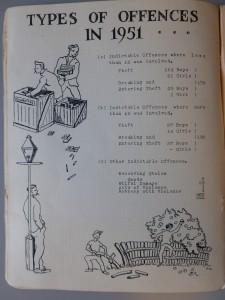
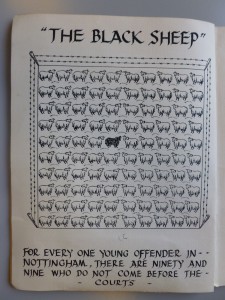
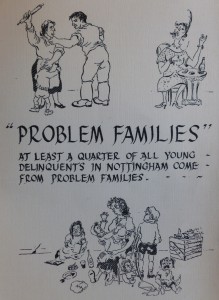
[…] Curious or quirky material that catches our eye, such as this post on Nottingham’s juvenile delinquents in The Black Sheep. […]